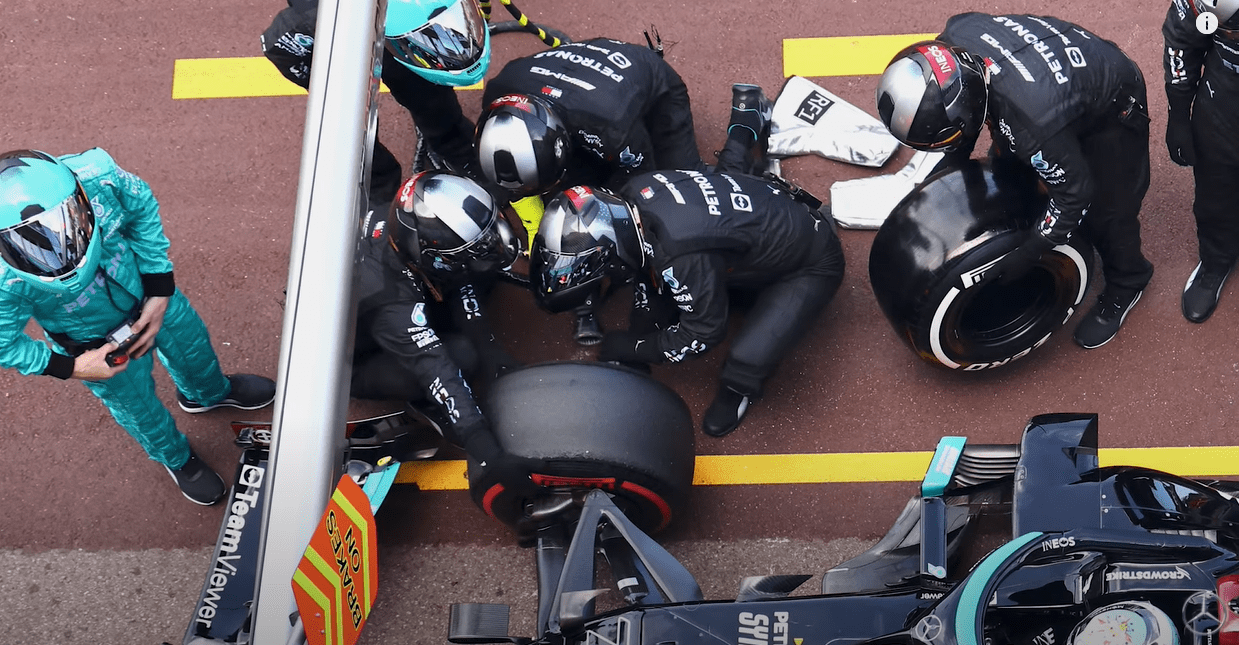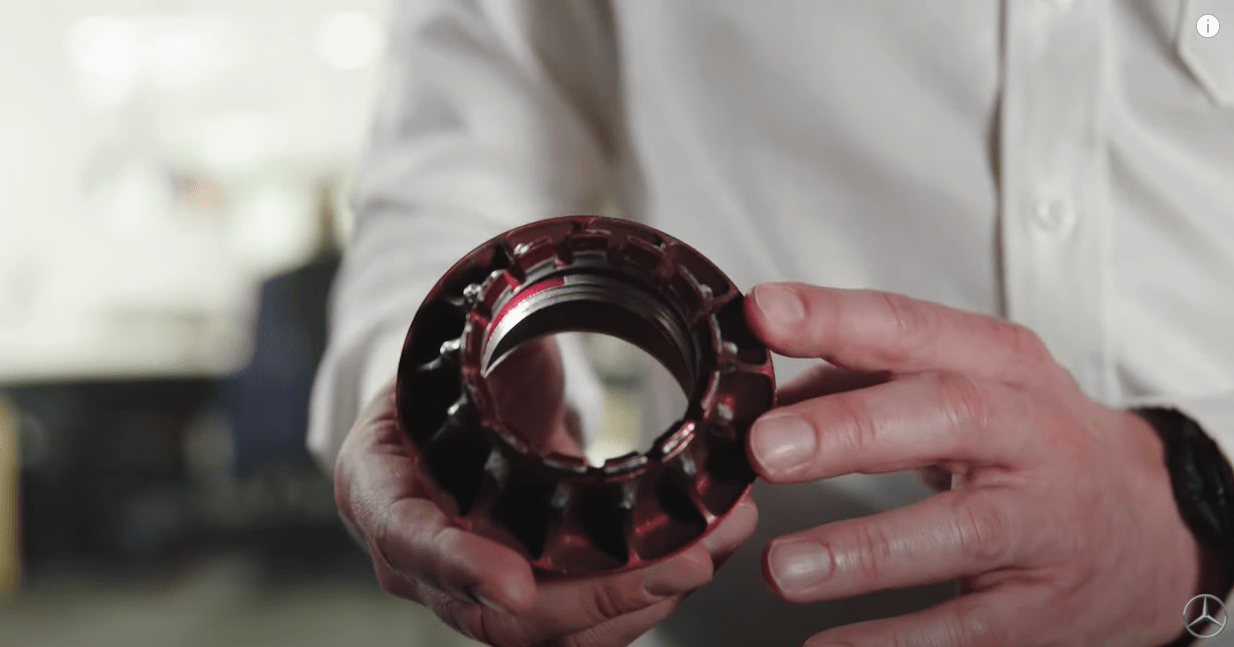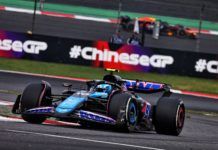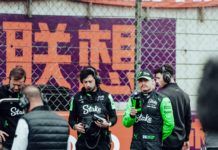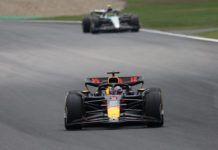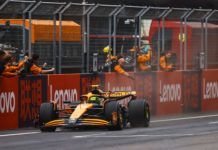Mercedes strategy director James Vowles has explained the happenings in F1 Monaco GP, with the pit error involving Valtteri Bottas and strategy of Lewis Hamilton.
As was the case in Imola, the F1 Monaco GP, as well, had the one lap which decided the fate of Mercedes. Hamilton tried for an undercut on Pierre Gasly, which didn’t work, and moments later, Bottas’ stop turned into a disaster with the right-wheel not coming off.
In their post-race debrief video with Vowles, Mercedes noted about a slight angle from Bottas during his stop, which didn’t help in the case, where the gun eventually damaged the wheel nut and despite multiple tries, it didn’t come off – ending his grand prix.
Mercedes couldn’t get it off after the race even, but have done so accordingly to their plan of removing it on Tuesday at Brackley (before the debrief was shot). Vowles explained the whole sequence of events and the plan of action now.
“The whole process is one and a half seconds, that’s it,” said Mercedes strategy director, Vowles. “That’s the process of removing a nut, changing a wheel and refitting the new nut. As a result of that, as I am sure you can tell, the margin for error is very small and if just the slightest problem happens, it slows the stop down or potentially, in an absolute disastrous case, this happens. So, let’s go through a little bit more detail about what the nuts are and why we use the systems we do.
“So, our nuts are what we call captive, they are maintained within the wheel and the tyre, so as the wheel comes off the nut goes with it. And this is what our nuts look like. You can see this ridged area around here and that is where the socket will connect into and effectively apply force. This is a brand-new nut, so you can see there is no wear and it hasn’t been in a race car yet. When the gun connects, and it removes the nut, such that the nut is now lose and the wheel comes off the car, this is what we would typically expect to see. So, you can see some wear patterns now.
“The reason why is because this nut has to hold a wheel to the car such it can cope with 5g forces in braking and laterally as well. It’s a huge amount of force going through the axle and the nut and clearly we can never have it coming lose. So, the gun is an incredibly powerful gun, such that you can actually see the mechanics having to restrain themselves holding themselves to the ground otherwise they get rotated with it at the same time.
“It’s an impact force and what happens is the nut typically loosens in four or five impacts against it. A hammering action. Now, what happened is we came on slightly angled, so when the socket was now connected to the nut, it slightly angled relative to it and as a result of that, now instead of distributing the load across all of the nut it was across a small section and that tore the metal clean off and in fact all of the metal was now removed from the nut.
“As a result of that, the nut was in place and we were unable to remove it. That’s a brief overview of what happened. Clearly, it’s a circumstance that cost Valtteri dearly and cost the team dearly and one that we are going to put steps in place to mitigate,” summed up Vowles, before adding about Mercedes not getting it off in Monaco, eventually.
“It’s now Monday afternoon whilst we are doing this filming and the car is on its way back in a truck,” said Vowles. “We expect it here later on this evening. I am fairly confident that by some time on Tuesday we would have that front right wheel removed. We did certain steps in Monaco to try and remove it, some during the pit stop, also some just afterwards, ultimately there we concluded that to remove that nut we were going to need some fairly heavy equipment and specialist equipment and that would be better done here in the factory.
“More so, it allows us an opportunity to do an autopsy on it to understand really how that nut was worn and gather some clues to allow us to do a better job going forward in the future. As a result of that we left the wheel on the car and packaged the car back into the truck to bring it back here directly,” summed up Vowles.
Moving on to Hamilton, Vowles explained the difference on the pace side for the Brit from Thursday to Saturday. He put it down to cooler conditions, suiting slightly more to Bottas than his teammate. The changes then they tried, just didn’t work out, as the seven-time F1 champion lost some confidence too, which is important for Monaco.
“On Thursday Lewis was actually very happy,” said Vowles. “His car was working well and the times he was setting would have put him fastest across those sessions. Now, it didn’t look that way because he had a little bit of traffic with Alonso and Leclerc coming out of the tunnel on his fastest lap, but the performance was there, he was content. As we went into Saturday that situation inverted. Whereas Valtteri perhaps was a little bit behind him on Thursday, Valtteri was very much leading now of our two drivers.
“So, what was the difference? On Thursday we had around 47 to 50 degrees track temperature and it cooled down significantly by the time we got to Saturday, more around the mid-30s now. Now, that happens on a number of different circuits but in this particular case, it seems we just weren’t able to get ourselves into the right working regime with the tyres and one of the drivers was just slightly happier than the other. But neither really working the tyres as effectively as we should.
“We tried a number of setup items but one of the issues that you have in Monaco is that it is a confidence builder. You need laps, you need consistent laps, you need confidence that the car is giving you everything you want out of it. If you can carry just a kilometre an hour or two more speed through turn one, two, three for example you generate just another temperature level, another degree or two which then gives you more grip through the next sequence. Conversely, if you don’t have confidence in the car and you don’t trust it, you go down the spiral in the other way and you lose grip.
“The setup between the two cars wasn’t dramatically different as we went into qualifying and race. Really, what had changed is just we weren’t able to extract everything from the car and the tyres as we wanted anymore,” summed up Vowles, who then went through the undercut option for Hamilton, while noting that he couldn’t have gone much further on those tyres as he radioed. At max, he could have done 2-3 laps more, and not 10.
“It’s an interesting question, so if l bring you to what we discussed on Sunday morning,” started Vowles. “Early, was actually, really, lap 20, lap 18. That would have been early in Monaco, that would have been a sensible point if you had to try something or if you are in the lead of the race and you wanted to stop, to fit the Hard and go to the end. Lap 30 was what we defined in the morning as late, as very long. Now, that window was created on purpose by Red Bull and Verstappen.
“They pulled away very quickly and then managed the gap such that the field didn’t really have a gap to pull into anymore. So, in the case of Valtteri, he had Perez and he also had Vettel behind him in his pit window. So, we couldn’t stop. He was really just managing really everyone’s pit stop gaps. That started to open up as we got towards lap 30, but, now, remember that’s not really early by definition of the race anymore. If we go back to 2019 in fact, we took a lap 10 safety car and went to the end. So, these tyres can very much do that distance.
“Relative to Gasly, we had been behind him all of that first stint and clearly we weren’t going to be able to overtake him on track and there is only two possibilities: there is an overcut whereby he stops first and you go longer, and an undercut. That’s very typical, and that’s all the choices we had available to us. The problem with an overcut is that doesn’t exist until Gasly stops. He has to stop to present an opportunity for us to have free air in front of us. He already had a gap to traffic behind, the same gap that we put Lewis into and he wasn’t taking it, which means he wasn’t terribly convinced that they had to stop first, they were waiting for us to stop. I am fairly confident had we waited a lap or two they still wouldn’t have stopped.
“That now meant that we had an opportunity, we can wait and hope that perhaps something happens to his tyres or a situation takes place, or we can take the prerogative and go for the undercut. On our calculations we should have come out just ahead of him. It wasn’t an easy undercut, but it was an achievable undercut. There were a few issues here. The first is that in Monaco, compared to other tracks, we don’t really have enough information to properly define that. The Hard tyre wasn’t used in FP2, last time we used it was in FP1 on Thursday and there was no data from 2019 so it’s a little bit of interpolation, a lot of interpolation in fact, as to what would have happened with that Hard tyre on the out lap.
“As things ended up, Lewis came out under two tenths behind Gasly, it was incredibly tight and close but we were wrong, we didn’t undercut. The difficulty of warming that Hard tyre on the out lap was such that we didn’t complete it. We could have gone longer, so that’s the other opportunity and waited. There are a few things that pushed us into stopping. Other teams, Valtteri especially, was starting to struggle quite significantly with the tyres. You saw in the case of Valtteri that he was pulling Sainz back with him and indeed Vettel and Perez were much faster than him behind. That wasn’t the only car that was starting to struggle on the tyres.
“Remember, lap 30 is still quite a long way into the race and we had a fear that waiting with Lewis and waiting another two laps would just put us into a situation where that gap actually got worse to Gasly. It’s always harder following a car in front. As a result on the balance of everything we had available, on the balance that what we thought we could complete a successful undercut and had we, we would have been fine relative to Vettel, we decided to do that. Now, as I stand here clearly, it’s wrong and more so than that we lost multiple positions. Gasly when he came out didn’t have Lewis’ pace, he was several seconds off and he pulled Lewis back relative to Vettel who, whilst he wasn’t quick, he was quick enough to get the overcut on both of those drivers,” summed up Vowles.
Here’s a photo of a used wheel nut from Mercedes:
Here’s the whole video on Mercedes misery: https://www.formula1.com/en/latest/video.2021-monaco-grand-prix-mercedes-monte-carlo-misery.1700662575474038995.html
Here’s Lewis Hamilton and Mercedes on under-performance
Here’s Valtteri Bottas, Toto Wolff and James Allison on pit debacle

